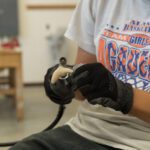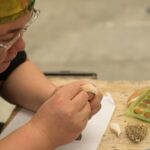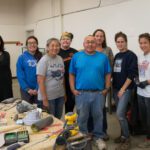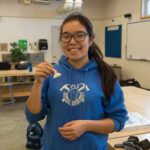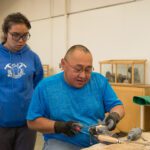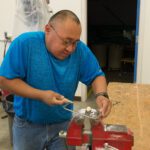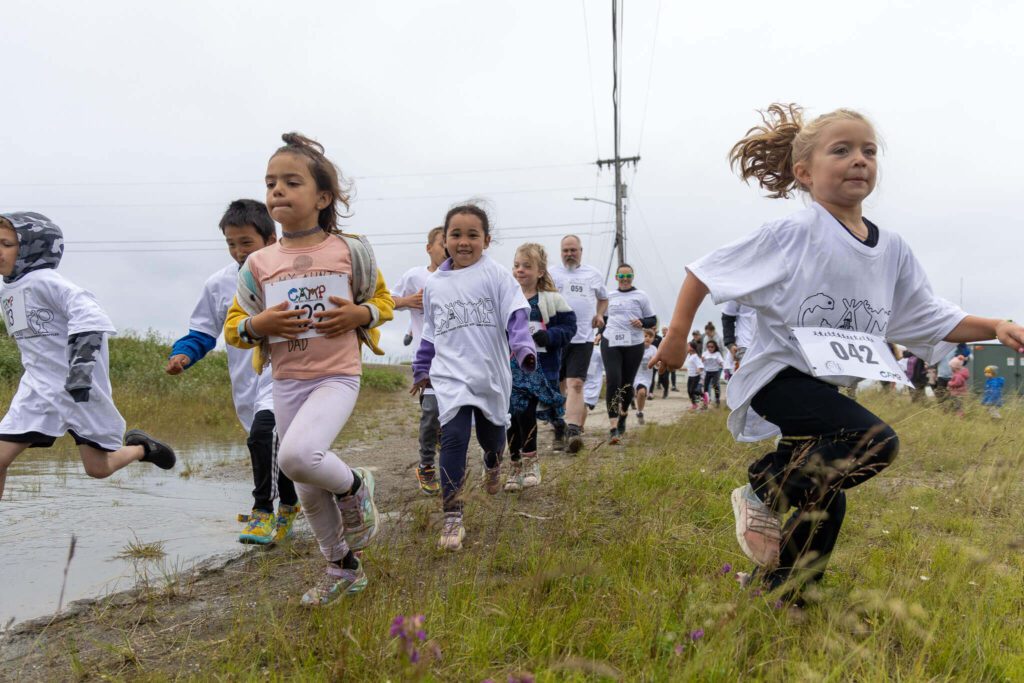A master ivory carver was in Nome two weekends ago to share his knowledge with students new to this tradition. KNOM was at Nome-Beltz Jr/Sr High school as class got underway.
Four students of varying ages were hard at work sawing, sanding, designing, and shaping ivory into everything from a ring to the tail of a whale. This was all part of a community workshop put on by the Anchorage Museum and the Smithsonian Arctic Studies Center as part of their ongoing program “Material Traditions.” The class was open to anyone who was interested and could hold a dremel. Ivory carving, though, was not always taught so freely.
Mary Jane Lichard was one of the students.
“Growing up when I wanted to take classes like this, my teachers used to always say ‘that’s only for boys — only boys should carve, not girls,'” she said. “I was very happy that all of us [at the workshop] are women. There’s not a male student, and I am very happy that we have this opportunity.”
The workshop was meant to share techniques and knowledge concerning ivory carving, but it also showed a change in mindset when it comes to who is allowed to be a student. Jerome Saclamana is an ivory carver originally from Nome, but he was brought up from Anchorage to be the instructor of the workshop.
“Its been great,” he said. “They are very very quick studies on lessons in ivory carving. I am amazed how how quickly they pick up on carving.”
Saclamana was introduced to the tradition of ivory carving at a young age, and many of his relatives were ivory carvers from King Island.
“It just something that my father and uncles and our forefathers did for a living, a pastime, or a hobby,” he said. “I actually started when I was probably about six years old — when my uncle handed me a walrus tooth to round off with a file and sand it and polish it.”
The Anchorage Museum is hoping to provide resources to anyone who wants to learn ivory carving and other traditional crafts, but who may not have had the same experience as Saclamana. For those with limited experience with traditional materials, the Anchorage Museum is providing these workshops and online resources. Dawn Biddison of the Smithsonian Arctic Studies Center urges people to go the center’s website.
“One of the things were doing during these residencies is we’re video taping what were doing so that we can create short instructional videos,” she said. “They’re not meant to replace an artist but they’re meant to supplement teaching from an Alaskan Native artist. So if you’re about to take a class or you’ve taken a class, this can act as a reference so that you can refresh your memory about what you’ve learned.”
There are videos of other workshops using traditional materials such as driftwood, porcupine quills, and salmon skin. Find these resources at the Smithsonian Arctic Studies Center’s website.






